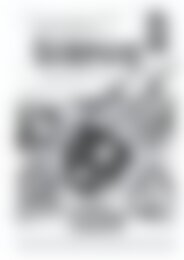PR-6171R Science A STEM Approach - Primary 2
Create successful ePaper yourself
Turn your PDF publications into a flip-book with our unique Google optimized e-Paper software.
Materials<br />
IT’S A STRETCH<br />
Lesson 1<br />
Lesson Plan<br />
Note: This lesson is to establish the pupils’ prior knowledge, so it is important to not correct them at this<br />
stage.<br />
Introduction:<br />
1. Display page 98 on the whiteboard and ask pupils to think about what is odd about these pictures.<br />
Using a think-pair-share, pupils explain what is unusual about the image based on prior knowledge.<br />
Pupils then share their thoughts as a whole class.<br />
Development:<br />
2. Show pupils a space hopper toy and a hair tie. Select a pupil to demonstrate how each object is<br />
used. Alternatively, display the images on page 99 (the correct objects).<br />
3. In pairs, pupils complete the T-chart on page 100 by viewing a video of a space hopper and a hair<br />
tie in action, then describing the observable properties of each object and how they can change<br />
shape. Pupils explore if each object returns to its original shape or not before answering the<br />
discussion questions on page 100.<br />
Differentiation<br />
• Guided group work can support pupils in discussing the object and how it changes, with the<br />
adult questioning and prompting pupils to create a group T-chart.<br />
• Challenge pupils to write sentences to describe the object and how it changes using scientific<br />
words where they can.<br />
Reflection:<br />
4. Display the T-chart from page 100 on the whiteboard. Pupils share some of their descriptive words<br />
with the class, while the teacher writes the class responses. This is an opportunity to create a word<br />
wall for this unit of work.<br />
5. Discuss the following questions: What kind of materials are used to make things bouncy and<br />
stretchy? Is a piece of wood or a metal ruler bouncy or stretchy? What other words can be used to<br />
describe those objects? Do all objects return to the same shape after they have been changed? Can<br />
all objects have their shape changed?<br />
Viewing sample<br />
Prim-Ed Publishing – www.prim-ed.com 978-1-912760-15-2 1st <strong>Science</strong>: 97<br />
CLASS<br />
A <strong>STEM</strong> AP<strong>PR</strong>OACH


















